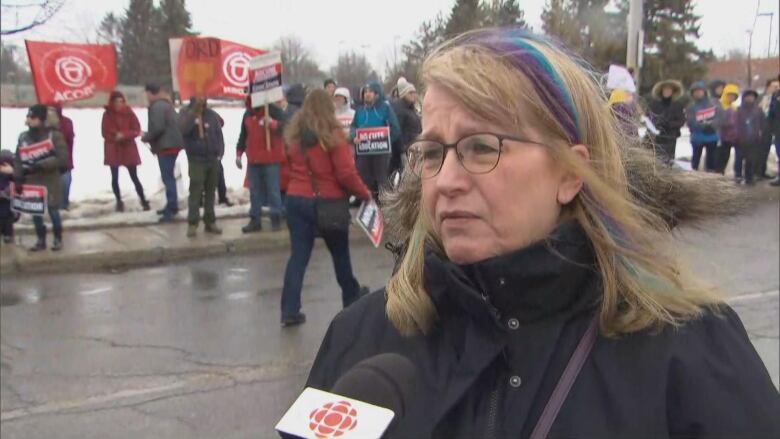Bigger classes could cost OCDSB 300 high school teachers
Impact of provincial class size changes would be felt over 4 years

New provincial class size targets could leave the Ottawa Carleton District School Board (OCDSB) with 300 fewer high school teachers in four years.
The province has changed class size targets from 22 students per class up to 28 in secondary classrooms.
The public school board'sstaff told trustees at a Tuesday night meetingthat would leave them with between 250 and 300 fewer teaching positions in high schools.
Other changes would also mean 10 to 20 fewer elementary teachers and a loss of 40 early childhood educators.
- Bigger classes, new math and sex-ed programs part of Ontario's education revamp
- Larger high school class sizes will make Ontario students more resilient, education minister says
- Class size increase 'bad news for kids,' Ottawa teachers say
Board chair Lynn Scott said the numbers are a worst-case scenario and assumes no new funding for enrolment or other programs.
She also said they hope the provincial government may reconsider when they see the impact of changes across the province.
"If they look at this and how it is working out in a lot of boards and decide to do things differently that's probably a good thing," she said in an interview.
"If they don't, we think it's manageable."
Not an insurmountable challenge
Some school boards in the province have told teachers they won't have permanent spots for them in the fall.
Scott said the OCDSB is not prepared to make that kind of decision, calling ita challengebutnot an insurmountable one.
"We will certainly find it a little more challenging to organize some of our classes, but how that works out is going to depend on what the rest of our funding looks like."
The school board is still waiting for more information, but Scott said she is hopeful there won't be a need for layoffs and the reductions can be handled through attrition and finding space in the budget.
"The question is, where are the best places to find those efficiencies and how [can we]ensure that our kids are in fact getting the education they are going to need?" she said.
Hard on new teachers
Nancy Akehurst, president of the local chapter of the Ontario Secondary School Teachers' Federation, said this showswhat class size changes will really mean for students.
"It's not necessarily the size of the classes that is going to be the problem. It's that there won't be as many classroom offerings," she said.
She said she expects boards will have to cut back on elective classes in order to ensure mandatory classes are covered with fewer teachers working.

New teachersare going to have a particularly challenging time finding permanent positions, she said.
"If they are talking about reducing the number of teachers every year, then how can they possibly get new teachers in?" she said.
"We have had occasional teachers who have been occasional for years and still can't get a full-time contract."












_(720p).jpg)


 OFFICIAL HD MUSIC VIDEO.jpg)
.jpg)



























































































